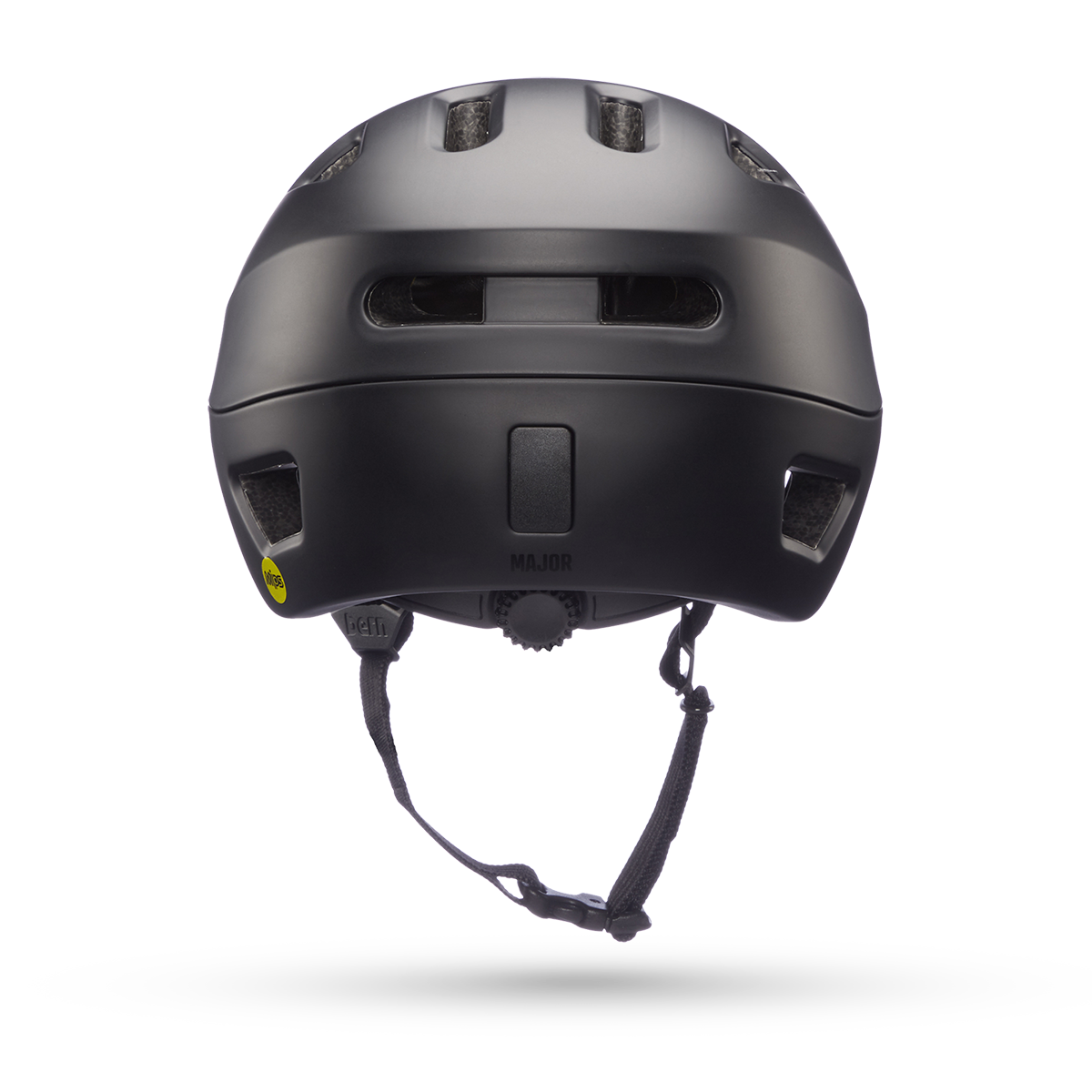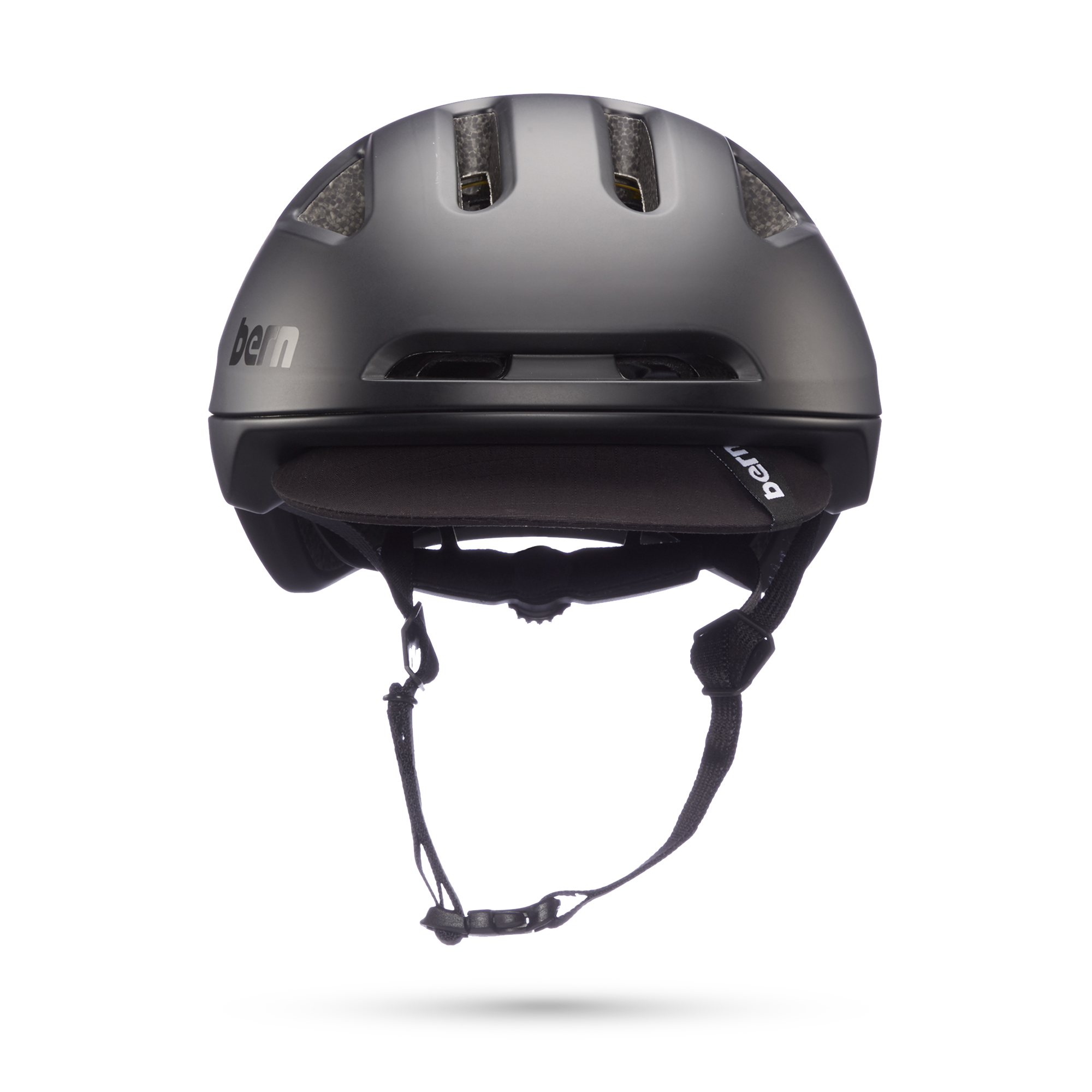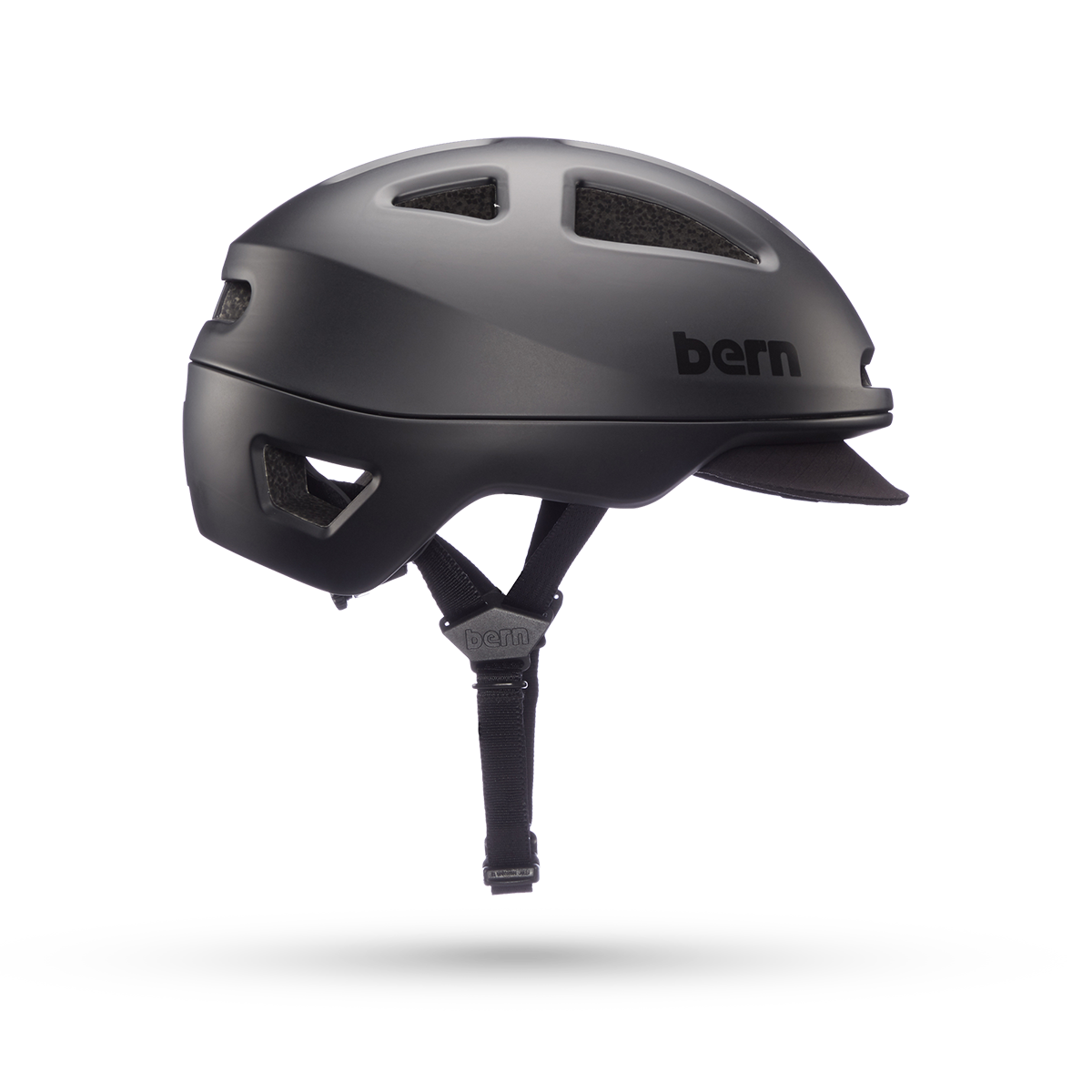





Bern Major MIPS Helmet - Matte Black
Looking for a commuter helmet that won’t jack up your style? Meet the Major. We loaded it up with 14 vents, our dialed in Compass Fit system, and a Mips liner for best-in-class protection. Then we shipped it off to college, where it earned a 5-star safety rating from the Virginia Tech Helmet Lab. Congrats, you just found the perfect lid for your next ride downtown.
What is MIPS?

Originally developed by a brain surgeon and a biomechanics scientist, the Mips® Safety System has revolutionised the world of helmet safety. By complementing the helmet with a low-friction layer, designed to move slightly in the event of an impact, the system is designed to help redirect rotational motion away from the head. This is intended to help reduce the risk of brain injury.
How MIPS protects your brain
- The MIPS Low friction layer adds protection for certain types of impact
- A low friction layer allows a sliding motion of 10-15mm, in all directions, reducing rotational motion to the brain.
- The MIPS brain protection system is designing to reduce strain to the brain.
Find your Perfect Fit
To find the perfect fit, please follow the below steps.
| Fit Size | S | M | L |
| CM | 52 - 55.5cm | 55.5 - 59cm | 59 - 62cm |
| Hat Size | 6 1/2 - 7 | 7 - 7 3/8 | 7 3/8 - 7 7/8 |
Please measure the circumference of your head at the widest point

Features
Compass Fit
Find your perfect fit with our compass fit system. Simply twist the dial to adjust to your custom fit, keeping your head snug and secure. Due to its light weight, this system will feel as if the helmet were custom made for your comfort.
In Mold
Shell seamlessly fused with interior EPS foam for a clean look and high strength to weight ratio.
MIPS
Multi-Directional Impact Protection System. Designed to protect against rotational violence to the brain caused by rotational impacts.
Specifications
Avg. Weight
320g; 360 W/ MIPS
Safety Standards
Complies With U.S. CPSC Safety Standard For Bicycle Helmets For Persons Age 5 And Older
EN1078
Construction
In Mold
Fit System
Compass Fit
Vents
14
Safety

MIPS
While the standards address force sustained in direct impacts, the Mips component is tested to help reduce your brain’s internal rotational motion in an impact, the types of injuries that can lead to concussions. During an impact, the Mips low friction layer allows the helmet to slide 10-15 millimeters in all directions, reducing some of the rotational motion to the brain vs. helmets without Mips.

VT Helmet Rating
The Bern Major earned a 5-star safety rating from the Virginia Tech Helmet Lab, the highest possible rating on this test. Through a series of impact testing, the Virginia Tech Helmet Lab calculates a STAR score (Summation of Tests for the Analysis of Risk), which sums the exposure-weighted risks for common cyclist head impact scenarios and their corresponding concussion risks. Using 6 impact locations at 2 different velocities, the STAR equation evaluates 12 impact conditions representative of cycling accidents. Click here to learn more about the Virginia Tech Helmet Lab’s testing procedures.

NTA 8776
Developed by the Netherlands, the NTA 8776 standard evolved from EN 1078 to address the emergence of e-bikes and potential for higher speed impacts. This standard follows the same safety metrics but NTA 8776 differs with an increased surface area for direct impact testing and a lower allowable threshold of impact transference to account for bikes with auxiliary pedal assist (A.K.A. E-bikes) up to 45km/h.

